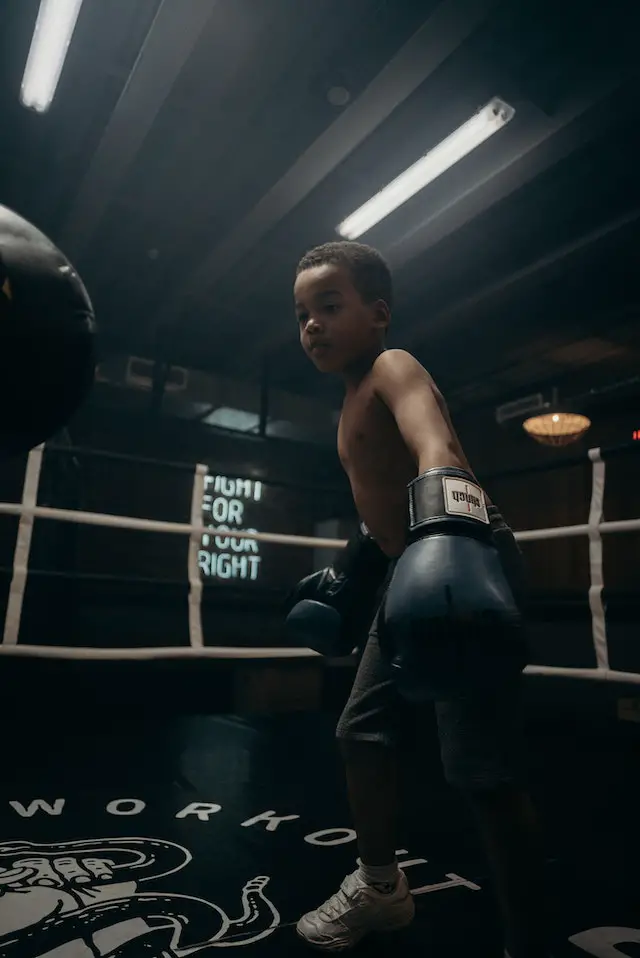Kids boxing or youth boxing is one of the best ways to keep your Fkid engaged in physical activity. Boxing also teaches dedication and discipline. You have landed on the right page if you are looking for a Beginners Guide To Boxing For Kids.
I have covered almost everything in this guide, from what boxing is for kids to what basics should be taught. So gear up to read the complete article to learn about boxing training for youth.
What Is Youth Boxing?
As the name suggests, youth boxing is boxing training given to kids aged seven to seventeen. This type of boxing is designed to be an intro to boxing for kids, and the best part is that it also consists of a guide for advancing boxing skills. These skills can help them turn into professional boxers.
Also, youth boxing training resembles beginner boxing for adults which teaches kids about the basics of boxing like basic punches and correct fighting stances.

At What Age Can Kids Start Boxing?
There is no particular age bar for your kids to start learning boxing. Be it a 3-year-old or 6-year-old; if your child is interested in boxing, you can enroll them. But I have previously mentioned that the youth boxing training is for kids aged 7 or above, right?
This is because hitting a heavy bag requires a certain level of strength and coordination. And kids below the age of 7 don’t possess them. Also, for this reason, only you won’t find gloves small enough to fit a young child.
Though shadow boxing is recommended for young kids, they can’t find a small set of gloves, and thus, they can’t try out this exercise.
What Are The Boxing Exercises For Kids?
Initially, kids are always trained with the basic exercises which can also be done at home, namely,
Shadowboxing drill:
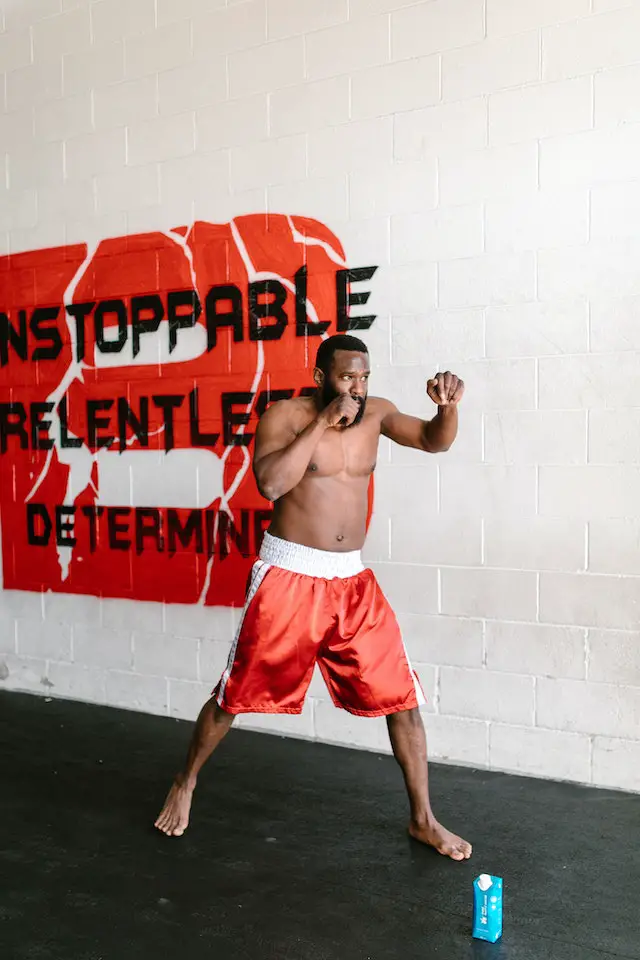
Shadowboxing helps your kid practice the correct form, stance, and punches for different scenarios while facing opponents. This exercise doesn’t require any equipment, and thus it makes it feasible to practice it anywhere.
Jumping rope:
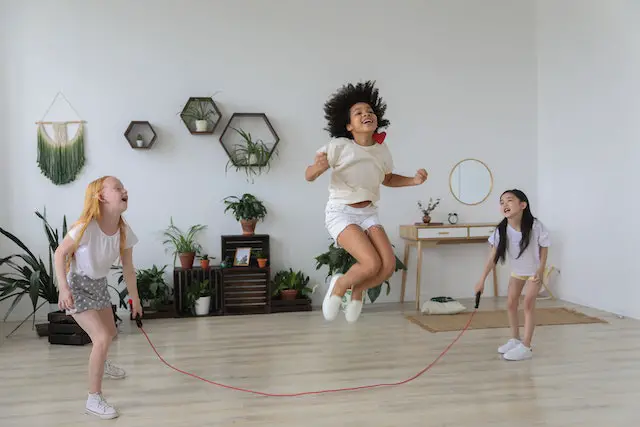
Jumping rope helps gain concentration, speed and agility, and most importantly, cardiovascular endurance. One can reap many benefits with jumping rope for a 2-minute warm-up or doing 5-10 minutes as a cardio workout.
Heavy bag drills:
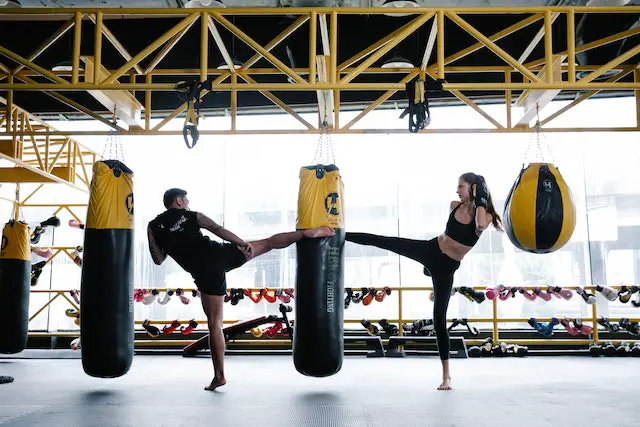
This type of exercise gives more power. A 3-minute round with a couple of quick jabs, resettings, and throwing 2 more quick jabs makes you feel strong.
Core work:
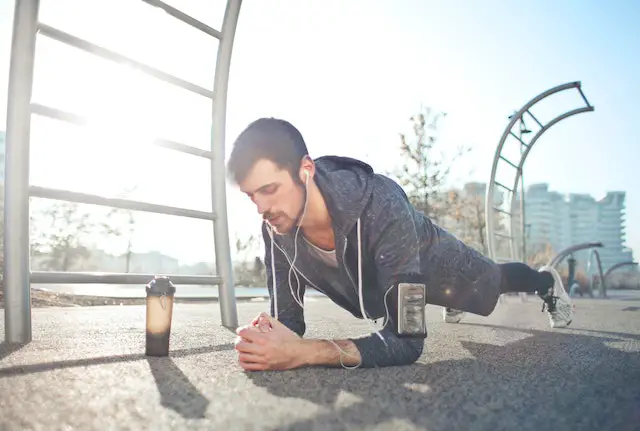
A strong core is important for any boxer. So to get a strong core, boxers must work on sit-ups, flutter kicks, elbow plank to high plank, etc.
So these are the boxing exercises for beginners or kids which help them build strength and endurance for boxing.
How Do You Start Boxing For Kids?
As a beginner, there are a few basic things your kid must be familiar with. Irrespective of the age, even if your kid is less than 7 years, he/she must be familiar with boxing basics like stance and punches.
Now let me explain what these basics are and why they are important.
Boxing stance
I can’t stress enough the importance of a boxing stance. A good boxing stance gives you balance and is also the key to both attacking and defensive techniques. Also, boxers should be able to throw punches at their opponent without losing their balance.
So for the boxer’s stance, imagine your feet on either side of an imaginary line and are parallel. Your weight is evenly distributed while your hands protect your face and your chin is slightly tucked. Also, your dominant arm will be your back arm.
Punches
Common punches for beginners include jab, cross, lead hook, rear hook, lead uppercut, and rear uppercut.
Jab
Jab is the most important punch that helps you switch between defensive and offensive modes while gauging your opponent’s distance and controlling the fight tempo.
To do this jab, you must stand in your fight stance, then start the jab by lifting your lead foot slightly. When your weight comes back down, extend the lead hand fist directly out in front of you. While doing this, ensure to turn your knuckles inward so that your palm is facing the ground.
Cross
Stand in your boxing stance and throw your rear hand from your chin, which crosses the body and travels toward the target straight.
Your shoulders should rotate 180 degrees when your arm crosses your body. Meanwhile, knuckles rotate inwards on the rear fist upon extension. Simultaneously, the lead hand is retracted and tucked against your face to protect your chin. Rotate your torso and hips as the cross is thrown for more power.
Lead hook
To perform your lead hook, stand in your fight stance and start transferring your weight from your lead foot to your rear side. When the weight transfers, your shoulder will rotate towards the rear side while lifting the elbow to a 90-degree angle while aiming for the target. The lead foot must pivot and rotate at the end of the punch for power.
Rear hook
To throw a rear hook, begin from the fight stance and start pivoting the weight from the ball of the rear foot. When this occurs, the weight should transfer to the lead side. Meanwhile, the hook elbow must be lifted to a 90-degree angle while aiming for the target. At the end of the punch, the rear foot should pivot and rotate with the hook for maximum power.
Lead Uppercut
To do the lead uppercut:
- Start in your boxer’s fight stance while slightly shifting your weight to your lead leg.
- Quickly push your arm out in a sharp motion so the back of your hand faces your opponent, and your knuckles are also facing up.
- Rotate your hips in and pivot on your lead foot. While doing this, ensure to keep your rear hand up, protecting your face.
Rear Uppercut
Lastly, to throw the rear uppercut, stand in your fight stance, and throw your rear side hip forward while pushing your arm out and up, ending with your palm facing you. Keep your lead hand up to protect your face.
How Do Kids Get Into Boxing?
The question must be, “what brings boxing interest in kids?” See, kids get into boxing the same way adults do. They get inspired by watching boxing matches on TV or anyone around them practicing it.
We can’t tell exactly where they get the inspiration, but they try to mimic them if something interests them. If parents and children learn boxing together, it might offer a good opportunity to train and grow together.
What Equipment Do Kids Need To Start Boxing?
Kids boxing or youth boxing require the same equipment used by adults except for the change in size.
Now let me list some of the essential equipment for kids.
Kids boxing gloves and wraps
The boxing wraps and gloves are must-haves for boxing to protect your hands and wrists. The boxing gloves help protect the knuckles and hands from getting hurt while punching.
The boxing hand wraps to secure your movable bones and loose joints in your hands. These wraps fasten your joints together to distribute the shock across your entire hand.
Like boxing gloves for adults, kids’ boxing gloves vary on a different scale. They are categorized by weight, where they are much lighter, weighing between 4 and 8 ounces. Kid’s wraps are designed to be a bit smaller and shorter to fit the small hands.
Kid’s boxing bag
Kids’ boxing bags are small versions of heavy bags. You will find different types of punching bags, each with its pros and cons. But among them, a tall hanging bag is not for kids because the heavy hanging bags are either too tall or too wide for beginners, especially kids.
However, a standing bag sits low on the base and is more stable than other punching bag surfaces. So standing bags are highly recommended for boxers of all ages and heights.
Kids boxing shoes
Though boxing shoes aren’t recommended for beginners, you can buy them for your kids for their advantages. These boxing shoes give ankle support and better grip and thus act as a great safety precaution for your kids.
Conclusion
Thanks for reading the complete beginner’s boxing guide for kids. Boxing training for youth is similar to the one given to adults, except the intensity is lesser because kids at the age of 3 years or 6 years won’t have must strength to throw strong punches. As they become 12 year olds and hit teenage eventually, the intensity can be increased.
I have given you everything related to the topic and answered the most common faqs. I hope you got what you were looking for.

